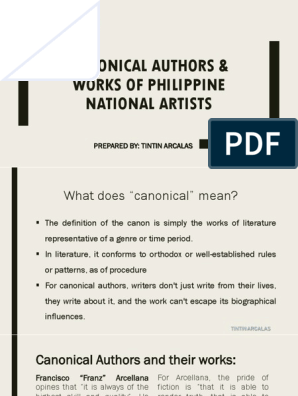100% found this document useful (2 votes)
2K views24 pagesRepresentative Text
This document identifies representative texts and authors from different regions of the Philippines to showcase the diversity of Philippine literature. It provides examples of folk stories, poems, dramas, and essays from each region of Luzon, Visayas, and Mindanao. The document also highlights some of the most prominent authors from each region and their significant works that helped establish their local literature.
Uploaded by
jeannie tamayaoCopyright
© © All Rights Reserved
We take content rights seriously. If you suspect this is your content, claim it here.
Available Formats
Download as PPTX, PDF, TXT or read online on Scribd
100% found this document useful (2 votes)
2K views24 pagesRepresentative Text
This document identifies representative texts and authors from different regions of the Philippines to showcase the diversity of Philippine literature. It provides examples of folk stories, poems, dramas, and essays from each region of Luzon, Visayas, and Mindanao. The document also highlights some of the most prominent authors from each region and their significant works that helped establish their local literature.
Uploaded by
jeannie tamayaoCopyright
© © All Rights Reserved
We take content rights seriously. If you suspect this is your content, claim it here.
Available Formats
Download as PPTX, PDF, TXT or read online on Scribd
/ 24





























































































